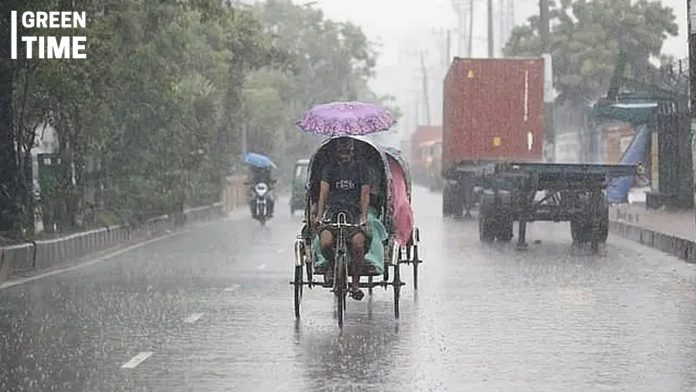In Bangladesh, the rainfall during the initial 17 days of June has been below the average, which is causing alarm among meteorologists due to the consistent decline in monsoon rains. The onset of Asadha, the initial month of the Bengal monsoon season, commenced on June 15th, nevertheless, there has been a scarcity of rainfall. Meteorologist Bazlur Rashid stated that, with the exception of Sylhet, Rangpur, and Mymensingh, the majority of areas have encountered notably lower than average levels of precipitation. Khulna and other regions are currently experiencing heatwaves, which are intensifying the already hot weather throughout this season.
Research suggests a concerning decrease in monsoon precipitation. An analysis of data from 1952 to 2012, published in the Journal of Engineering Science in 2015, revealed a drop in average rainfall throughout the months of June, July, and August. Specifically, the study found that rainfall reduced by 0.16 mm, 0.3 mm, and 0.10 mm accordingly. Muhammad Abul Kalam Mallick from the Meteorological Department emphasised that there is a decrease in continuous rainfall and an increase in abrupt, intense downpours, which is causing higher temperatures.
A separate research, titled “Evaluation of Long-Term Rainfall Patterns in Bangladesh,” spanning from 1981 to 2020, unveiled a decline in monsoon precipitation, specifically in the divisions of Dhaka, Rajshahi, and Rangpur. With the exception of Chittagong, the most other divisions had a comparable decline. The decrease in monsoon rains naturally results in elevated temperatures due to the absence of their cooling effect.
In 2023, Bangladesh had an atypical heatwave, with temperatures surging to 41°C in June, in contrast to the typical maximum of 33°C observed during the monsoon season. Mallick observed that temperatures last year above the typical range by 9°C for a number of days, which was an uncommon event.
According to Professor AKM Saiful Islam from BUET’s Institute of Water and Flood Management, these changes are attributed to the influence of global warming. The concurrent occurrence of declining precipitation and increasing temperatures during the monsoon season serves as a distinct indication of the environmental changes that Bangladesh is currently experiencing.
The decreasing monsoon rainfall and increasing heat highlight the immediate necessity for implementing climate adaption techniques to alleviate the effects of global warming in Bangladesh.

